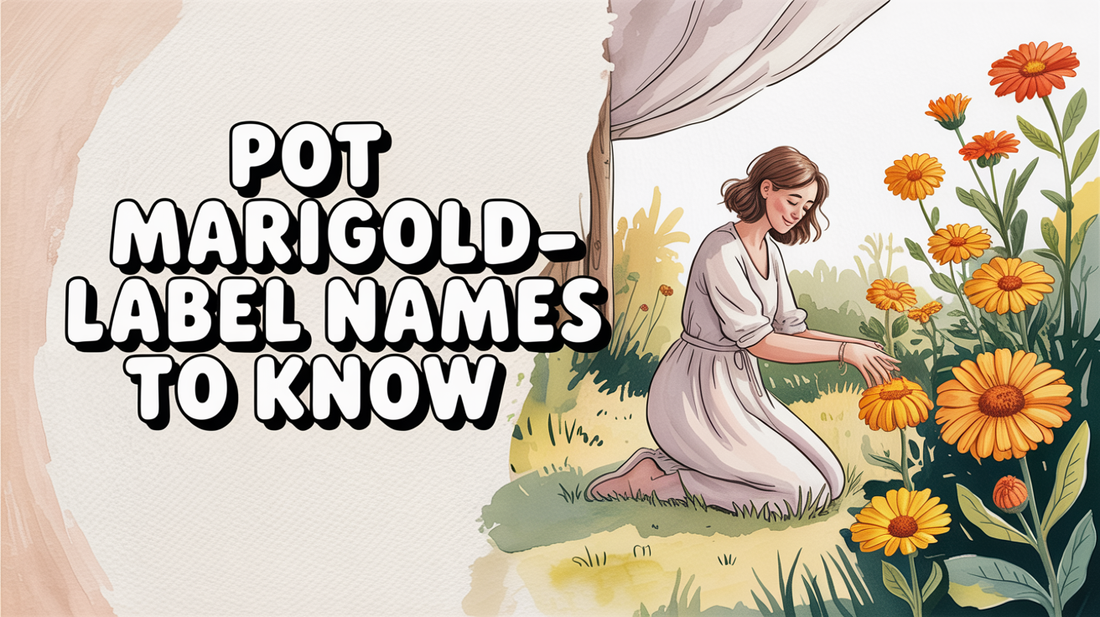What is another name for calendula?
calendula common names, botanical identity, label reading — Briefly validate the reader’s problem as implied by the title. Naturally mention calendula common names, botanical identity, label reading within 150 words and outline that this post is organized into three clear sections built from current research so readers can take action tonight.
Common Names & Botany
Calendula officinalis, commonly referred to as pot marigold, is a stunning flowering plant belonging to the daisy family (Asteraceae). This plant is known by a variety of names across different cultures, with 'pot marigold' being the most recognizable, reflecting its historical use in cooking and herbal remedies. Other names include 'English marigold,' 'Scottish marigold,' and 'ruddles,' which echo its European heritage. Globally, it is known as 'souci' in French, 'ringelblume' in German, and 'caléndula' in Spanish, showcasing its widespread appreciation.
The botanical name 'Calendula officinalis' is derived from the Latin word 'calendae,' meaning 'the first day of the month,' which hints at the plant's prolonged blooming period. Traditional names like 'Mary's gold,' 'bride of the sun,' and 'summer's bride' speak to its vibrant golden flowers and cultural importance. This plant, with its bright orange to yellow petals and aromatic scent when crushed, is not a true marigold but is closely related to daisies and sunflowers.
- Commonly called pot marigold, highlighting its culinary history.
- Recognized by diverse names like 'souci' (French) and 'caléndula' (Spanish).
- Belongs to the Asteraceae family, related to sunflowers and daisies.
- Features bright orange to yellow petals with a unique aromatic scent.
Reading INCI & Labels ✨
When delving into product labels and INCI (International Nomenclature of Cosmetic Ingredients) listings, it’s important to recognize how calendula is represented for accurate identification. Typically, you will find calendula listed as 'Calendula Officinalis Flower Extract' or 'Calendula Officinalis Extract.' If the product is oil-based, expect to see it as 'Calendula Officinalis Flower Oil' or 'Calendula Officinalis Seed Oil,' depending on the part used. Some products may simplify it to 'Pot Marigold Extract' or 'Calendula Extract', yet the full botanical name is preferred for clarity.
Labels might also specify processing methods, such as 'Calendula Officinalis (Pot Marigold) Flower Water' for hydrosols. Organic or certified products often highlight 'Calendula Officinalis Flower Extract*', with an asterisk indicating organic certification. While concentration levels are rarely mentioned, calendula typically appears towards the middle or end of ingredient lists, so be sure to check carefully to ensure you're getting the authentic benefits.
- Calendula is commonly listed as 'Calendula Officinalis Flower Extract' on labels.
- Oil-based products may specify 'Calendula Officinalis Flower Oil'.
- Some products might use alternative names like 'Pot Marigold Extract'.
- Organic products will highlight their certification, often with an asterisk.
- Check the ingredient list to ensure calendula is present in meaningful amounts.
Why We Recommend a Gentle Helper 🌿
Jane Vine Calendula Cream is formulated for quick absorption and a soothing, lightweight feel. It may support a calm routine and help reduce skin irritation.
- Fast-absorbing and unscented for sensitive skin.
- Includes skin-soothing ingredients derived from nature.
- Inspired by Nature, supporting your skincare journey.
Related Plants & Look‑Alikes 🔍
Several plants can be mistaken for calendula due to visual similarities, which is important to note for safe and effective use in herbal and cosmetic products. True marigolds, such as those from the Tagetes genus, are commonly confused with calendula. They may have similar orange-yellow flowers but possess different properties. African marigolds (Tagetes erecta) and French marigolds (Tagetes patula) can also be mistaken for calendula, as they have more pungent scents and unique leaf structures.
Other plants like Arnica montana, which showcases similar yellow-orange flowers, belong to a different genus and present different safety considerations. Chamomile (Matricaria chamomilla) may look alike when dried but has smaller, white-petaled flowers with yellow centers. Proper identification is essential; differences in leaf shape, flower structure, and plant height can assist in distinguishing calendula from its look-alikes.
- True marigolds (Tagetes) look similar but have different properties.
- African and French marigolds are known for their stronger scents.
- Arnica montana has a different safety profile despite similar flowers.
- Chamomile has distinct white petals, differentiating it from calendula.
- Proper identification requires careful examination of plant features.

